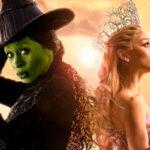

“American Beauty” is a film that transcended conventional cinema, offering a deep and critical view of American suburban life. Released in 1999 and directed by Sam Mendes, the film captivated audiences with its innovative narrative and complex characters. The plot revolves around Lester Burnham, played by Kevin Spacey, a middle-aged man in existential crisis who seeks to reinvigorate his life and his relationship with his family amidst the chaos of an American suburb.
With a blend of dark humor and drama, “American Beauty” explores themes such as dissatisfaction, consumerism, and the search for authenticity. The film not only captured the essence of a generation but also sparked debates about the social and personal pressures that shape our lives. In this text, we will delve into some of the curiosities that make “American Beauty” a memorable masterpiece.
1 – CASTING THE ROLE
Although Tom Hanks, Jeff Daniels, Kevin Costner, Woody Harrelson, John Travolta, and Bruce Willis were considered for the role of Lester Burnham, and Holly Hunter and Helen Hunt for the role of Carolyn Burnham, director Sam Mendes already had Kevin Spacey and Annette Bening in mind when he pitched the idea to Alan Ball.
Ball was thrilled with the suggestion! Kevin Spacey, who ultimately won the Oscar for Best Actor for the role, mentioned in an interview that he fell in love with the script as soon as he read it and knew he had to be part of the film no matter what.
2 – PERMISSION
Since Thora Birch was a minor during the filming of the movie, her parents needed to grant permission for her topless scene. Additionally, child labor inspectors were present on set to oversee the filming of the scene.
3 – KEVIN SPACEY’S IMPROVISATION
Kevin Spacey improvised all his actions in the scene where Lester is smoking in the car and singing “American Woman.”
4 – THE FILM WAS A THEATER PLAY
The idea for the film began as a stage play. According to Alan Ball’s Oscar speech, he was in the plaza of the World Trade Center when he saw a bag being carried by the wind, which inspired him to write the play. This idea stayed with Ball, who later adapted it into a screenplay for the film.
5 – STEVEN SPIELBERG WAS MOVED READING THE SCRIPT
Steven Spielberg was deeply moved reading the script for “American Beauty.” According to the film’s supplementary materials, when the producers brought the script to DreamWorks, where Spielberg was one of the founders, he read it, was moved, and recommended: “Make it now and don’t change a thing.”
Additionally, he suggested Sam Mendes to direct the film. And thus, the story unfolded! Spielberg also remarked that, throughout his experience helping emerging filmmakers, he had never seen anything as impressive as Sam Mendes’ debut.
6 – UNEXPECTED SUCCESS
Alan Ball, the creator of “American Beauty,” admitted that he did not believe the film would achieve the success it ultimately did. In interviews, Ball revealed that he had no expectations that the film would generate so much debate and attention. He noted that if he had imagined the impact the film would have, he likely would have been unable to finish the script due to the pressure.
Ball’s surprise at the film’s reception highlights how “American Beauty” exceeded its creator’s expectations. The recognition and acclaim the film received reveal the unexpected power of a work that, despite initial doubts, managed to capture the essence of existential crisis and the complexity of human relationships with a depth that resonated strongly with both audiences and critics.
7 – KIRSTEN DUNST AUDITIONED FOR THE ROLE
Kirsten Dunst, Sarah Michelle Gellar, Brittany Murphy, and Katie Holmes declined the role of Angela Hayes. Tiffani Thiessen auditioned for the part but was not cast. Thus, the character was eventually played by Mena Suvari, who made the role one of the most iconic of her career.
Jessica Biel was initially cast as Jane Burnham but had to leave the project. Thora Birch took on the role of Jane, Ricky Fitts’ muse. Ricky, in turn, was almost played by Jake Gyllenhaal but was ultimately portrayed by Wes Bentley.
8 – ONE SINGLE TAKE
The scene where Carolyn screams after failing to sell the house was filmed in a single take.
9 – SPECIAL EFFECTS
The scene where Lester applies for a job at Smiley Burger was filmed at night, but special effects were used to make it appear as if it were during the day. Observant viewers may notice that neither Kevin Spacey nor the Smiley Burger boy have shadows on their faces.
10 – REHEARSALS FOR THE FILM
The film had two weeks of rehearsal before filming began, which roughly corresponds to the timeframe depicted in the story. Sam Mendes, with his extensive experience in directing theater, always dedicates a significant amount of time to rehearsals for his films.
11 – REFERENCES TO ANOTHER CLASSIC
“American Beauty” makes several references to Vladimir Nabokov’s novel “Lolita.” In addition to both stories featuring an older man obsessed with a young seductress, the name “Lester Burnham” is an anagram of “Humbert learns,” and Angela’s last name, Hayes, is similar to Haze, Lolita’s last name.
12 – BUDGET AND BOX OFFICE
The film had a low budget of just $15 million and was a major box office success, grossing $356 million worldwide.
“American Beauty” is a work that continues to fascinate and provoke deep reflections on suburban life and human nature. With its striking casting choices, such as Kevin Spacey and Annette Bening, and the unique inspiration of Alan Ball, the film not only broke new ground at the time of its release but also set a new standard for socially critical cinema.
The revealed curiosities, from Spacey’s improvisations to the subtle references to “Lolita,” add layers of complexity to the narrative and the film’s creative process. Sam Mendes’ dedication to rehearsals and Spielberg’s impact on the production highlight the care and passion that transformed the script into a memorable cinematic experience.
Ultimately, “American Beauty” remains a powerful reflection on the quest for authenticity and the emptiness of modern life, resonating with audiences to this day.








